Volumes of Revolution 2 Rotating about a line

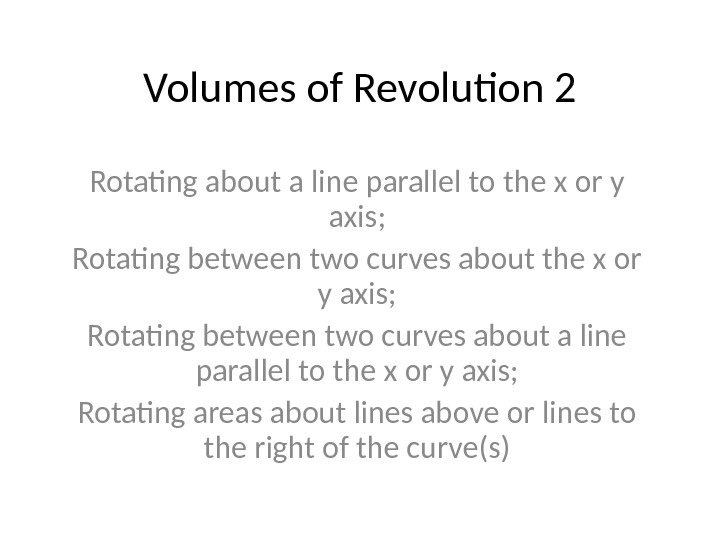
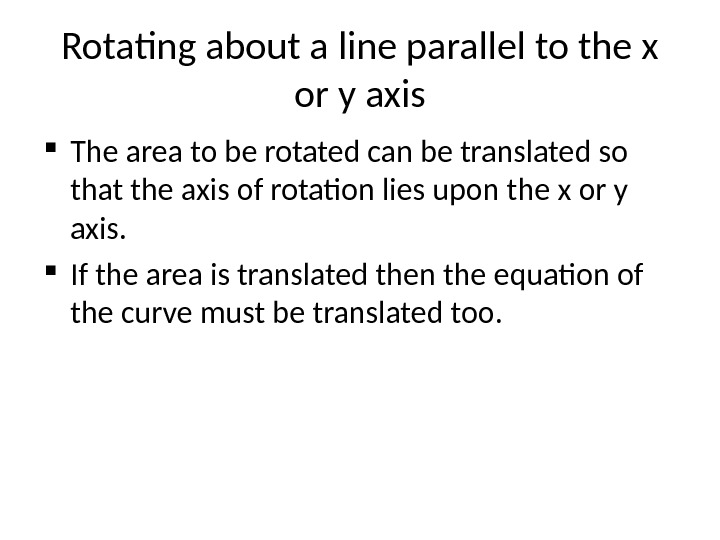
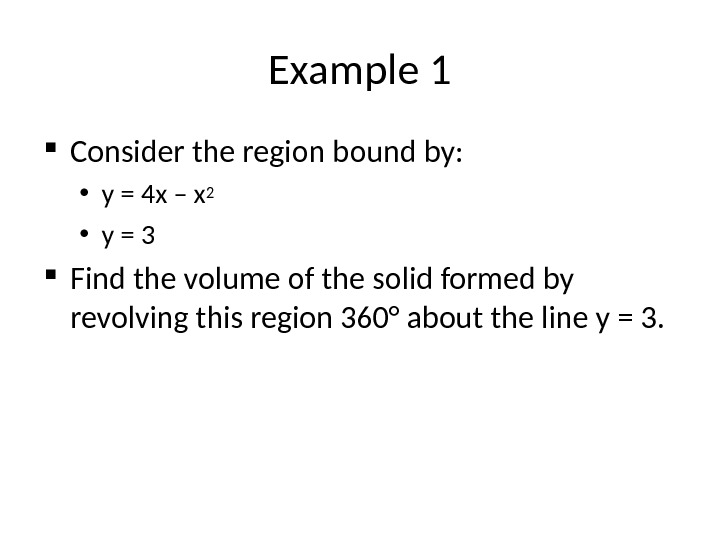
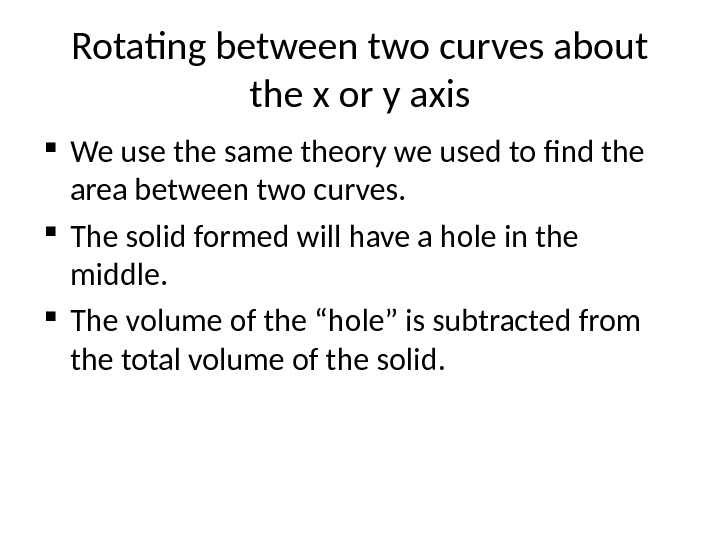
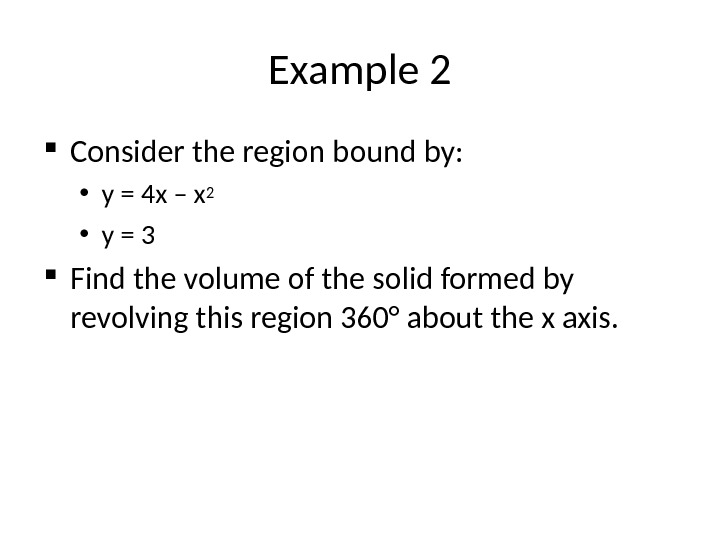
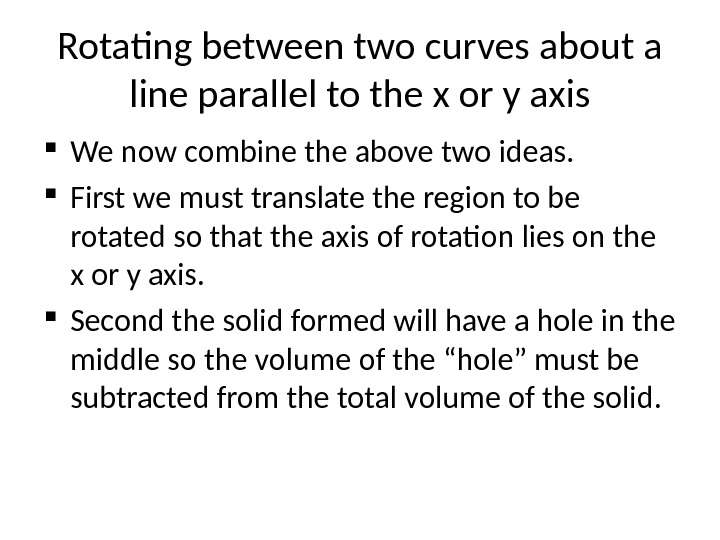
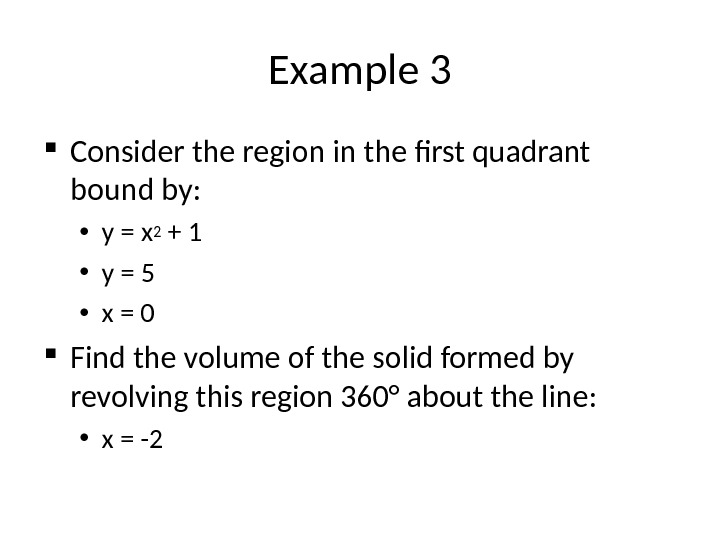
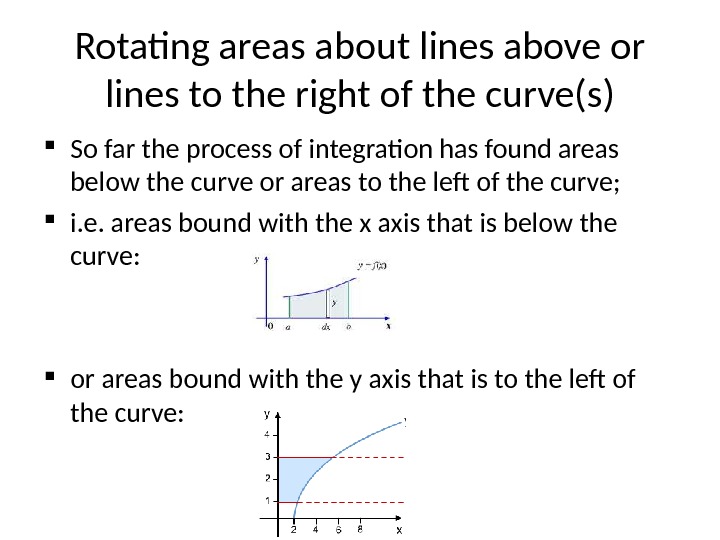
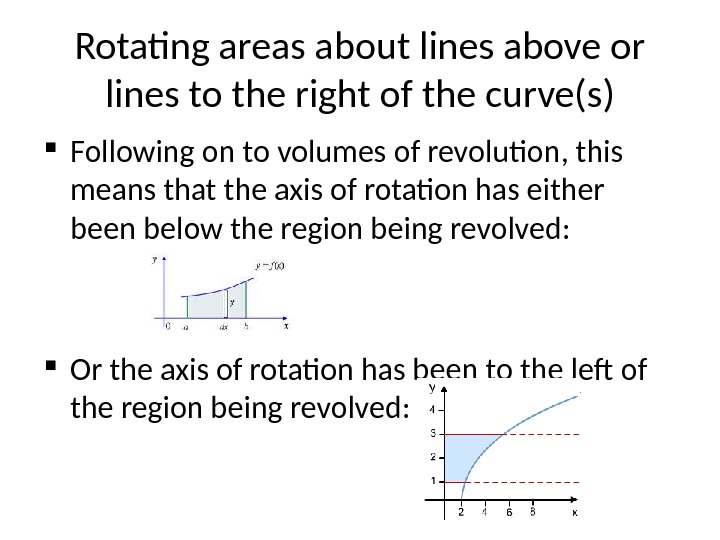
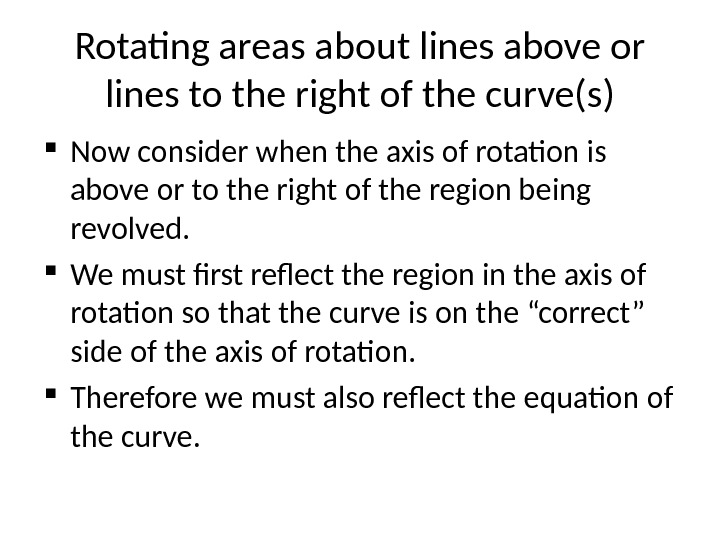
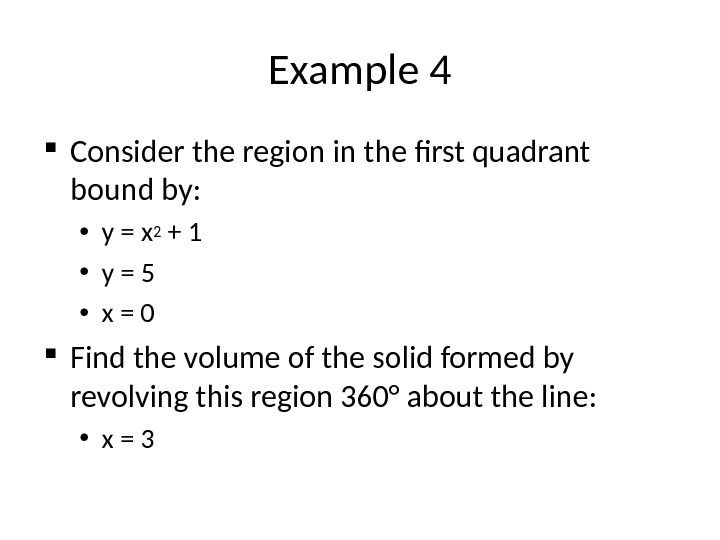
- Размер: 142 Кб
- Количество слайдов: 11
Описание презентации Volumes of Revolution 2 Rotating about a line по слайдам
 Volumes of Revolution 2 Rotating about a line parallel to the x or y axis; Rotating between two curves about a line parallel to the x or y axis; Rotating areas about lines above or lines to the right of the curve(s)
Volumes of Revolution 2 Rotating about a line parallel to the x or y axis; Rotating between two curves about a line parallel to the x or y axis; Rotating areas about lines above or lines to the right of the curve(s)
 Rotating about a line parallel to the x or y axis The area to be rotated can be translated so that the axis of rotation lies upon the x or y axis. If the area is translated then the equation of the curve must be translated too.
Rotating about a line parallel to the x or y axis The area to be rotated can be translated so that the axis of rotation lies upon the x or y axis. If the area is translated then the equation of the curve must be translated too.
 Example 1 Consider the region bound by: • y = 4 x – x 2 • y = 3 Find the volume of the solid formed by revolving this region 360° about the line y = 3.
Example 1 Consider the region bound by: • y = 4 x – x 2 • y = 3 Find the volume of the solid formed by revolving this region 360° about the line y = 3.
 Rotating between two curves about the x or y axis We use the same theory we used to find the area between two curves. The solid formed will have a hole in the middle. The volume of the “hole” is subtracted from the total volume of the solid.
Rotating between two curves about the x or y axis We use the same theory we used to find the area between two curves. The solid formed will have a hole in the middle. The volume of the “hole” is subtracted from the total volume of the solid.
 Example 2 Consider the region bound by: • y = 4 x – x 2 • y = 3 Find the volume of the solid formed by revolving this region 360° about the x axis.
Example 2 Consider the region bound by: • y = 4 x – x 2 • y = 3 Find the volume of the solid formed by revolving this region 360° about the x axis.
 Rotating between two curves about a line parallel to the x or y axis We now combine the above two ideas. First we must translate the region to be rotated so that the axis of rotation lies on the x or y axis. Second the solid formed will have a hole in the middle so the volume of the “hole” must be subtracted from the total volume of the solid.
Rotating between two curves about a line parallel to the x or y axis We now combine the above two ideas. First we must translate the region to be rotated so that the axis of rotation lies on the x or y axis. Second the solid formed will have a hole in the middle so the volume of the “hole” must be subtracted from the total volume of the solid.
 Example 3 Consider the region in the first quadrant bound by: • y = x 2 + 1 • y = 5 • x = 0 Find the volume of the solid formed by revolving this region 360° about the line: • x = —
Example 3 Consider the region in the first quadrant bound by: • y = x 2 + 1 • y = 5 • x = 0 Find the volume of the solid formed by revolving this region 360° about the line: • x = —
 Rotating areas about lines above or lines to the right of the curve(s) So far the process of integration has found areas below the curve or areas to the left of the curve; i. e. areas bound with the x axis that is below the curve: or areas bound with the y axis that is to the left of the curve:
Rotating areas about lines above or lines to the right of the curve(s) So far the process of integration has found areas below the curve or areas to the left of the curve; i. e. areas bound with the x axis that is below the curve: or areas bound with the y axis that is to the left of the curve:
 Rotating areas about lines above or lines to the right of the curve(s) Following on to volumes of revolution, this means that the axis of rotation has either been below the region being revolved: Or the axis of rotation has been to the left of the region being revolved:
Rotating areas about lines above or lines to the right of the curve(s) Following on to volumes of revolution, this means that the axis of rotation has either been below the region being revolved: Or the axis of rotation has been to the left of the region being revolved:
 Rotating areas about lines above or lines to the right of the curve(s) Now consider when the axis of rotation is above or to the right of the region being revolved. We must first reflect the region in the axis of rotation so that the curve is on the “correct” side of the axis of rotation. Therefore we must also reflect the equation of the curve.
Rotating areas about lines above or lines to the right of the curve(s) Now consider when the axis of rotation is above or to the right of the region being revolved. We must first reflect the region in the axis of rotation so that the curve is on the “correct” side of the axis of rotation. Therefore we must also reflect the equation of the curve.
 Example 4 Consider the region in the first quadrant bound by: • y = x 2 + 1 • y = 5 • x = 0 Find the volume of the solid formed by revolving this region 360° about the line: • x =
Example 4 Consider the region in the first quadrant bound by: • y = x 2 + 1 • y = 5 • x = 0 Find the volume of the solid formed by revolving this region 360° about the line: • x =

